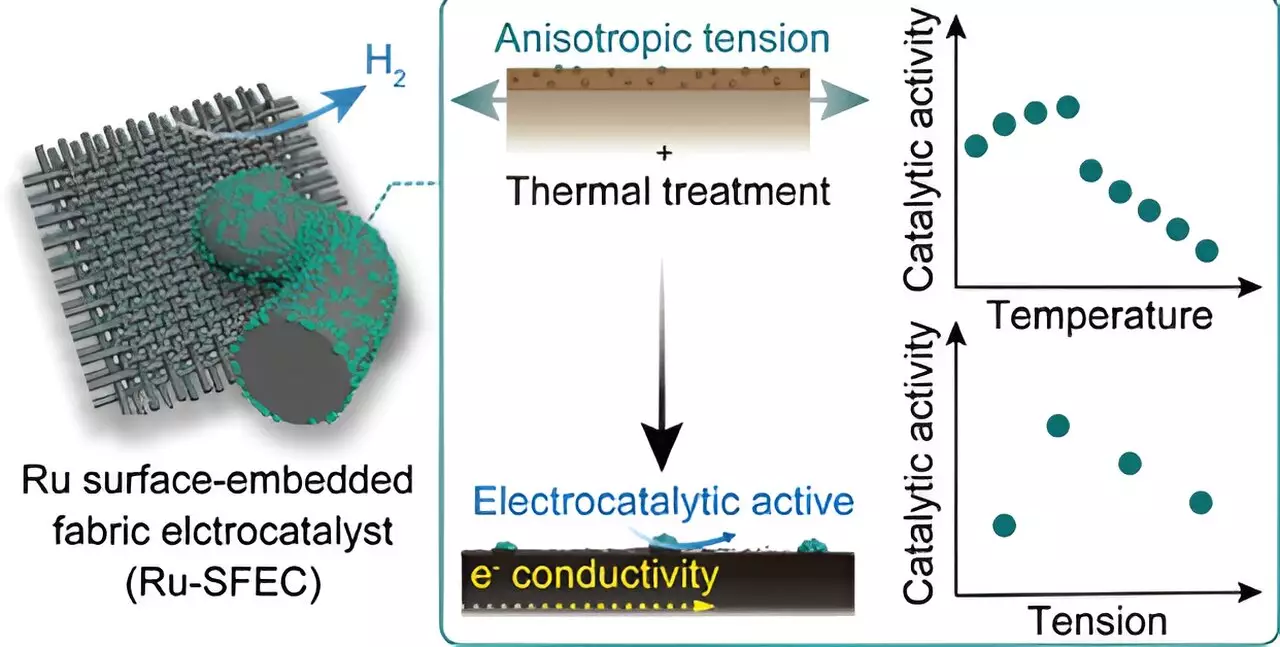A groundbreaking technology has emerged to tackle the limitations of current catalyst electrodes, revolutionizing the production of green hydrogen on a large scale and at a significantly lower cost. The pioneering development, detailed in the Journal of the American Chemical Society, is the result of a collaborative effort led by Professor Han Gi Chae from the Department of Materials Science and Engineering and Professor Jong-Beom Baek from the School of Energy and Chemical Engineering at UNIST, in partnership with Professor Kafer T. Tavuz from King Abdullah University of Science and Technology (KAUST).
Traditionally, electrochemical electrodes were manufactured by spraying a powder catalyst onto the electrode for fixation. However, this method presented various challenges, such as uneven application, clumping, and detachment of the powder catalyst. In contrast, the team’s innovative approach involves embedding highly functional catalysts into carbon fabric electrocatalysts using a conventional carbon fiber manufacturing process. This design allows for stable operation across large areas by utilizing a carbon fiber catalyst, offering a lifespan 100 times longer than conventional electrodes.
By integrating ruthenium (Ru) into the polymer precursor fiber during the manufacturing process, the team was able to enhance the stability of the catalyst. The use of polyacrylonitrile (PAN) as the precursor polymer effectively expressed the catalyst’s characteristics in a stable manner, with ruthenium acting as a chemical catalyst affixed to the surface. This resulted in the development of ruthenium surface-embedded fabric electrocatalysts (Ru-SFECs) with exceptional efficiency, showcasing a low overvoltage of 11.9 mV at a current density of 10 mA cm-2.
The new carbon fiber electrodes with functional catalysts offer a significant cost advantage over traditional electrodes dependent on expensive platinum-based catalysts. By substituting platinum with ruthenium and incorporating it into the polymer precursor fiber early in the manufacturing process, the team achieved remarkable stability and efficiency in the hydrogen generation process. Furthermore, the incorporation of ruthenium allowed for a negligible increase in overvoltage even after 10,000 operations, surpassing commercialized platinum powder catalysts.
The team’s groundbreaking approach capitalizes on the mechanical and electrical properties of carbon fibers, highlighting their potential as a versatile material for future electrochemical reactions. Through precise control of catalyst metal separation and microcarbon structure, the researchers achieved maximum stability and activity, paving the way for the continuous production of catalyst fibers for direct industrial applications. This innovation not only offers energy-efficient manufacturing processes but also reduces waste production, showcasing its potential for widespread adoption across various industries.
Looking ahead, Professor Chae emphasized the need for further research to enhance the mechanical durability, electrical conductivity, and cost-effectiveness of the advanced carbon fiber electrodes. The study sets a solid foundation for the development of stable, binder-free, and flexible electrocatalytic electrodes, opening doors for exploring other catalytic reactions with different metals. The successful validation of these findings in the commercial manufacturing process used in the carbon fiber industry signifies a significant step towards real-world implementation. With the potential for immediate applications in electrochemical, thermochemical, or photocatalytic processes, the flexible fiber form factor of this innovation holds promise for transformative advancements in hydrogen production and beyond.


Leave a Reply